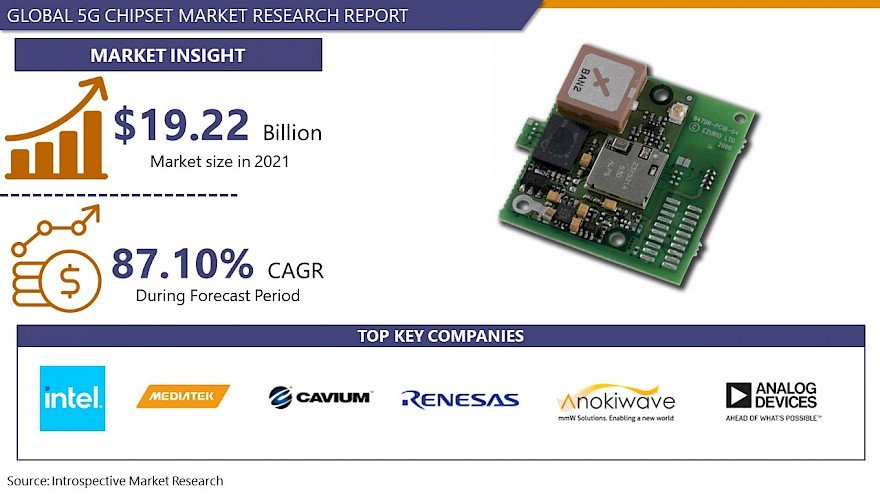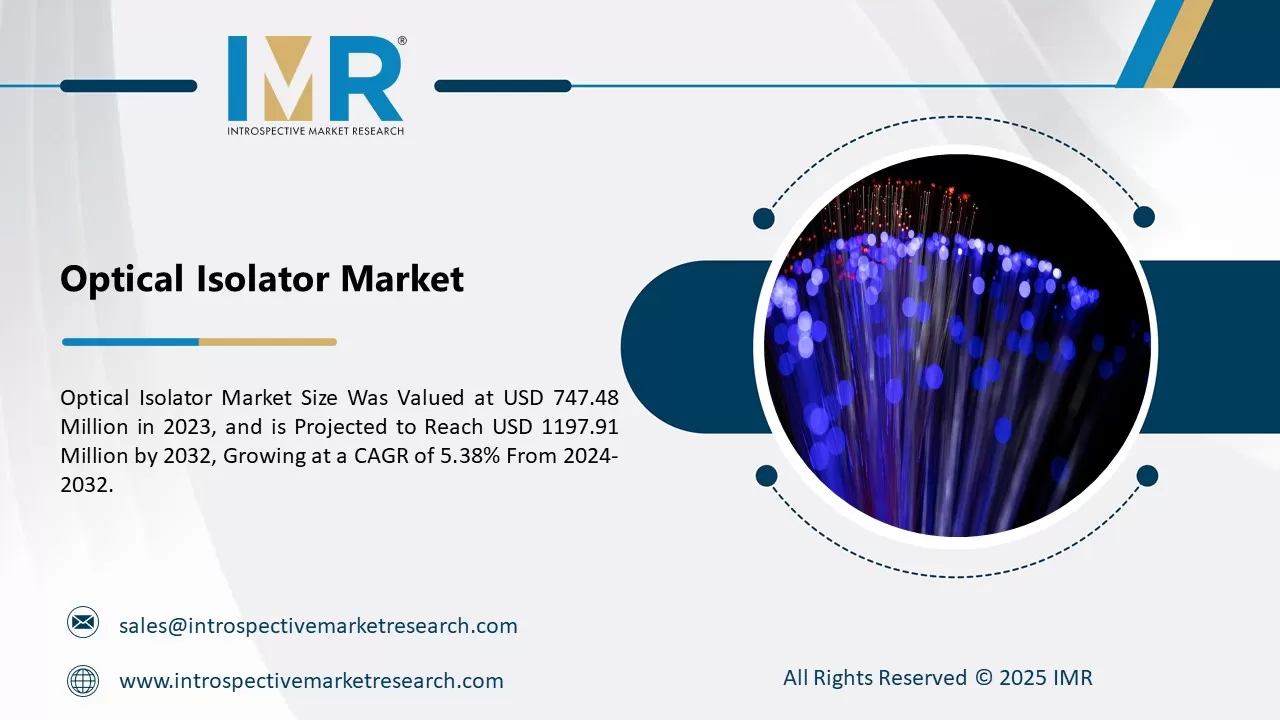
Market Size ? USD 19.22 Billion in 2021, Market Growth - CAGR of 87.10%, Market Trends ?the increasing demand from electronics industry is widening the scope for 5G Chipset Market.
According to the current analysis of Introspective Market Research, the global 5G Chipset Market was valued at USD 19.22 Billion in 2021 and is expected to reach USD 1,542.66 Billion by the year 2028, at a CAGR of 87.10%.
5G chipsets authorize 5G packet communication on smartphones, portable hotspots, IoT devices, and increasingly, notebook PCs with mobile network capabilities. 5G mobile devices are anticipated to combine familiar sub-6 GHz bands with new MIMO antenna systems, as well as high-frequency millimeter-wave (mm-Wave) bands with highly-focused beam-steering. Major telecom service providers, globally, are upgrading their network to 5G, which primarily relies on denser arrays of small antennas to provide ultra-high network and data speeds. The 5G technology is anticipated to unleash a huge IoT ecosystem that would allow networks to serve billions of connected devices. For instance, according to Ericsson's Mobility Report of June 2019, more than 10 million 5G mobile subscriptions were anticipated, globally, by the end of 2019. This is representative of the fact that the market is poised to grow throughout the forecast period.
The increasing penetration of internet services in-home entertainment, education, and health monitoring is turning the demand for smartphones into the global market. To retrieve these services unhindered, many technological organizations, such as Qualcomm, Fujitsu, and Broadcom are investing in 5G technology to hold the major share of the market. In addition, the technological advancement in the automotive industry and the development of self-driving cars are elevating the requirement for the development of data transfer network technology, providing results instantaneously. Furthermore, industries worldwide are considering IoT as one of the key factors that can raise their productivity by automating their business and manufacturing processes. This has significantly increased the push for 5G network technology to help higher data transfer and lower latency. Additionally, major applications of 5G in manufacturing include machine-human interaction, closed-loop robotic control, automated guided vehicles, and AR & VR for machine maintenance.
5G Chipset Market is segmented By Type (Application-Specific Integrated Circuits {ASIC}, Radio Frequency Integrated Circuit {RFIC}, Millimeter Wave Technology Chips, and Field-Programmable Gate Array {FPGA}), Operational Frequency (Sub-6 GHz, Between 26 And 39 GHz, above 39 GHz), Deployment (Smartphones/Tablets, Telecom Base Station Equipment, Connected Vehicles, Connected Devices, Broadband Access Gateway Devices, Other Deployment Types), Industry Vertical (IT & Telecom, Manufacturing, Energy & Utilities, Media & Entertainment, Transportation & Logistics, Healthcare, Other Verticals), and region.
Key Participants such as MediaTek Inc., Analog Devices Inc. Anokiwave Inc., Renesas Electronics Corporation, Nokia Corporation, Cavium Inc., Intel Corporation, Samsung Electronics Co. Ltd, Xilinx Inc., Texas Instruments Inc., Broadcom Inc., Huawei Technologies Co. Ltd, Qorvo Inc., NXP Semiconductors NV, Qualcomm Technologies Inc, Infineon Technologies AG, and others.
For this report, Introspective Market Research has segmented the 5G chipsets Market based on region:
Regional Outlook (Revenue in USD Billion; Volume in Units, 2021-2027)
- North America
- U.S.
- Canada
- Mexico
- Europe
- Germany
- France
- UK
- Italy
- Turkey
- Rest of Europe
- Asia Pacific
- China
- India
- Japan
- South Korea
- Indonesia
- Vietnam
- Thailand
- Rest of Asia-Pacific
- Middle East & Africa
- Saudi Arabia
- South Africa
- Iran
- Rest of MEA
- Latin America
- Brazil
- Argentina
- Rest of LATAM




